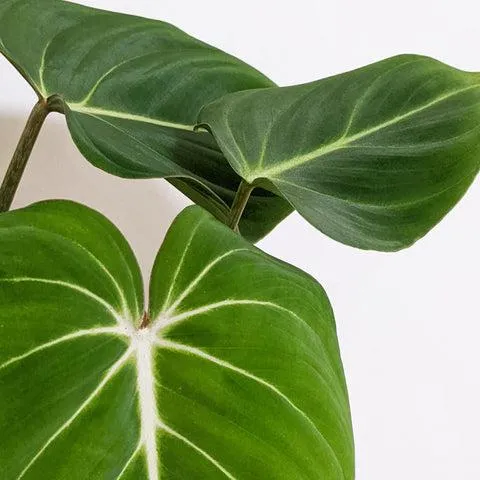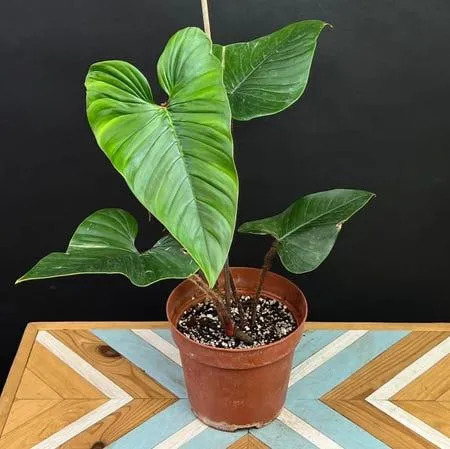Everything You Need to Know About Philodendron melanochrysum
Philodendron melanochrysum, commonly known as the chocolate-gold philodendron, is a stunning foliage plant loved by many plant parents. If you’ve been searching for “philodendron melanochrysum” online, you’ve likely come across this beauty and have questions about how to care for it. In this in-depth guide, I’ll cover everything from the plant’s origins and characteristics to soil, sunlight, watering needs and more. By the end, you’ll have all the info you need to decide if this is the right houseplant for you.
Where Does It Come From?
Philodendron melanochrysum is native to northwestern South America and southern Central America. From my experience visiting the rainforests of Costa Rica, I’ve seen how these plants thrive in their natural habitat of dense tropical forests. There, they can grow as epiphytic vines clinging to tree trunks. Nowadays, most philodendron melanochrysum found in homes are commercially propagated.
Identifying Features
As the name suggests, this philodendron’s most distinctive traits are its colorful leaves. Mature leaves have deep chocolate-brown upper surfaces which contrast stunningly with bright golden-yellow undersides. Young leaves emerge lime green before developing their dazzling two-tone appearance. Leaves emerge pendant and slightly ruffled, growing up to 12 inches long. Tendrils or “spines” extend from leaf stems to aid climbing in nature.
Soil and Potting Mix
To mimic its native humid forest habitat, philodendron melanochrysum prefers soil that retains moisture well but drains efficiently. A soil recipe I’ve found effective is: 1/3 proportion each of potting soil, orchid bark or coarse perlite, and peat moss or coco coir. The orchid bark adds drainage and aeration while the other ingredients balance moisture retention. Repot annually in spring into a container with drainage holes and a bit of room for growth.

Sunlight and Temperature
When outdoors, these plants receive dappled or partly sunny conditions in forests. Indoors, aim for medium to low indirect light. South- or east-facing windows are suitable. Temperature-wise, keep above 55°F. Position out of direct sun, which can scorch leaves. I once left one in a west window on a hot day – oops! It got sunburn and I had to trim crispy edges. Learn from my mistake!
Watering Needs
Maintain moist but not soaked soil. In summer, water whenever the top inch of soil dries out, around once or twice a week. In winter, cut back to every 10-14 days. Because it’s potbound, the soil may dry faster. To check moisture level without disturbing roots, stick your finger an inch deep. Mist leaves to boost humidity. I’ve found placing the pot on a pebble tray filled with water also helps. Err on the side of slightly drier soil to avoid root rot.
Fertilizing and Pruning
Feed monthly in spring and summer with a diluted water-soluble houseplant fertilizer. In fall and winter, cut back to every other month. For pruning, shape the plant by removing excess growth or trim off ratty looking leaves. New growth sprouts from nodes, so it bounces back fast. You can propagate stems in water or soil to make new plants.
Pests and Problems
Some issues philodendron melanochrysum may face include: mealybugs (fluffy white pests), scale (hard armored bugs), and spider mites (tiny red pests that weave webs). Check leaf undersides regularly. Wipe off small infestations with q-tip dipped in alcohol. For larger problems, spray neem oil or insecticidal soap. Avoid overwatering which causes root rot – a common killer.

Taking Cuttings
If you want to make more plants from your specimen, propagating cuttings is super easy with this philodendron. Simply cut 6-8 inch stems below a leaf node, remove lower leaves and place stem in water. In 2-4 weeks, you’ll see roots emerge. Then transplant rooted cuttings to soil. A friend of mine started with one cutting years ago and now has over 20 plants! It’s basically a weed – so share with friends too.
Final Thoughts
In conclusion, philodendron melanochrysum makes a stunning, low maintenance houseplant. Even if you kill your other plants, this one is super tough. Give it moderate light, keep soil moist but not soggy, and feed and prune periodically. With these basic care tips, you’re sure to enjoy this beauty for many years. Let me know if you have any other questions! I’d be happy to help you choose the perfect spot in your home for your new melanochrysum. Wishing you the best of luck, plant parent!
Philodendron melanochrysum Care Guide
| Trait | Details |
|---|---|
| Light | Bright, indirect light. Too much direct sun can burn leaves. |
| Soil | Well-draining, organically rich potting mix. Keep slightly moist. |
| Water | Water when top inch of soil is dry. Don’t let sit in water. |
| Humidity | High humidity preferred. Mist leaves to boost. |
| Temperature | Average household temperatures between 65-80°F. |
| Propagation | Grow new plants from stem cuttings in water or soil. |
| Pests | Check for spider mites or mealybugs. Treat with insecticide as needed. |
FAQ
-
What is a philodendron melanochrysum?
Basically, a philodendron melanochrysum is a kind of plant from the aroid family. It’s also known as the Swiss cheese plant because its leaves have natural holes in them like slices of cheese! This plant is native to the tropical rainforests of Brazil.
-
How big do they get?
These plants can grow pretty substantial depending on conditions. In ideal situations, a philodendron melanochrysum might reach six or seven feet tall. At the same time, they can also stay more modest in size at just a couple feet. So i guess size truly depends!

-
What kind of care do they need?
In general, philodendron melanochrysums like Warm temperatures, moderate watering, and high humidity. They do not appreciate super dry indoor heat in winter. Providing a pebble tray for extra moisture is a good idea. They also need fertilizer occasionally in the growing season. Despite these needs, they’re not too picky as houseplants.
-
Do they flower?
Although not very often, philodendron melanochrysums are capable of flowering indoors under perfect conditions. The small white blooms tend to appear in spring if the plant is very established and gets plenty of light. However, the flowers aren’t all that exciting if we’re being honest. So i wouldn’t grow one just hoping for flowers!
-
Are they toxic to pets?
Yes, unfortunately many varieties of philodendron can cause upset stomachs in animals if chewed or swallowed. The calcium oxalate crystals in the leaves and stems are no fun for pets. So it’s best to keep curious dogs and cats away from these pretty plants. Maybe hang it from the ceiling if little ones are around!
-
What kind of light do they need?
These plants prefer partial or dappled shade, like low indirect sunlight. Too much direct sun might scorch the leaves. They’ll grow well near an east or west facing window. Indoor lighting alone could work too, but growth will be slower. Ultimately, philodendron melanochrysums aren’t super picky about light as long as it’s not totally dark.

-
Are they difficult to care for?
All in all, the swiss cheese plant ranks among the low maintenance tropicals. As long as the soil is kept mildly moist and it receives adequate humidity, a philodendron melanochrysum will be happy, possibly forming lovely vines that add texture to any space. Don’t overwater it and watch for signs of distress – drooping or yellow leaves – then adjust. With just a little tlc, it can live for years!
